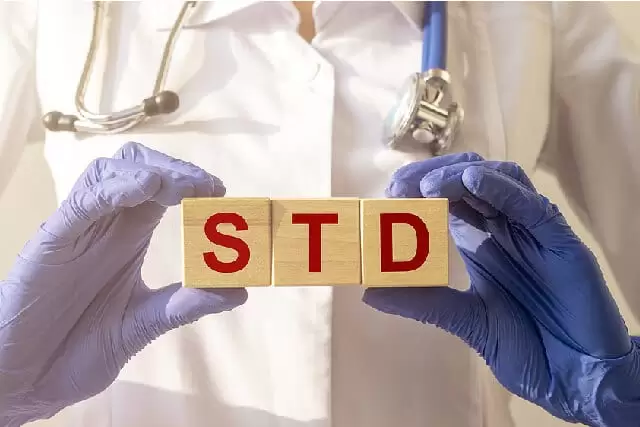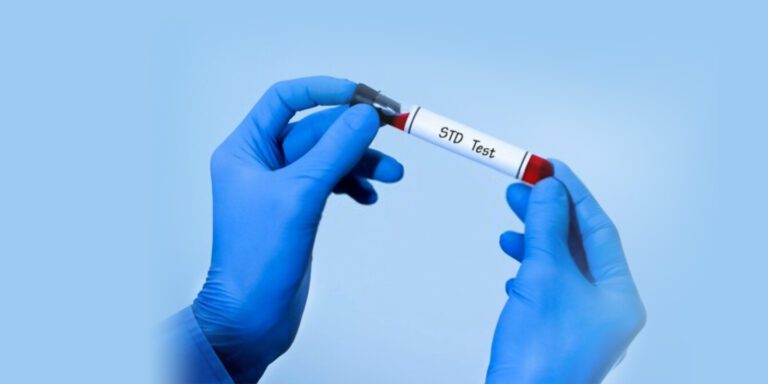What Is Considered an Open Wound for HIV Transmission
HIV (Human Immunodeficiency Virus) continues to be a serious global health concern, affecting millions worldwide. While many know that HIV can be transmitted through activities such as unprotected sex and sharing needles, there remains considerable confusion about the specifics. One key area of concern is what constitutes an open wound for HIV transmission.
An “open wound” in medical terms refers to a break or tear in the skin or mucous membranes, which could potentially allow HIV to enter the bloodstream. However, not every cut or injury qualifies as a high-risk factor for transmission. The risk of HIV transmission through an open wound depends on several factors, such as the type of injury, its location, and whether it has come into contact with HIV-infected bodily fluids.
This article will delve into the details of open wounds and their potential for transmitting HIV. We’ll explore what constitutes an open wound for HIV transmission, how different factors impact the level of risk, and how you can minimize the risk of infection through various preventive measures.
How HIV is Transmitted
Before we discuss open wounds specifically, it’s essential to understand the primary ways HIV is transmitted. The virus is transmitted when the blood, semen, vaginal fluids, rectal fluids, or breast milk of an HIV-positive person come into contact with the mucous membranes or bloodstream of an HIV-negative person. Here are the main transmission routes:
- Unprotected Sexual Contact One of the most common methods of HIV transmission occurs during vaginal, anal, or oral sex without the use of protection. During these activities, HIV can be transmitted if an uninfected individual is exposed to bodily fluids containing the virus.
- Sharing Needles or Syringes Individuals who inject drugs and share needles or syringes with others increase their risk of contracting HIV. Even small amounts of blood left on the needle can contain enough virus to infect someone else.
- Mother-to-Child Transmission HIV can be transmitted from an HIV-positive mother to her baby during childbirth, pregnancy, or breastfeeding. However, with proper medical interventions such as antiretroviral therapy (ART), the chances of transmission can be dramatically reduced.
What Defines an Open Wound for HIV Transmission?
The next critical question is, what exactly qualifies as an “open wound” in the context of HIV transmission? Generally, an open wound refers to any injury that causes a break in the skin, allowing fluids from the environment to enter the body. HIV can potentially be transmitted through such breaks, but the risk depends on several factors.
Size and Depth of the Wound
Not all open wounds are equal. Minor scrapes, superficial cuts, or small abrasions that don’t penetrate deeply into the skin are generally low risk for HIV transmission. In contrast, deeper, larger wounds expose underlying tissues and blood vessels, increasing the potential for HIV to enter the bloodstream.
The Risk of Small Cuts vs. Larger Wounds A small cut, such as a paper cut, may seem insignificant, but it can still be considered an “open wound for HIV transmission” if it is exposed to HIV-infected fluids. Larger or deeper wounds, such as surgical incisions or deep punctures, represent a higher risk for transmission, especially if they are located in high-risk areas.
Location of the Wound
The location of an open wound is another important factor. Cuts in areas with a rich blood supply, such as the genital, rectal, and mucous membranes, can increase the likelihood that the virus will enter the bloodstream. The skin in these areas is often thinner, which makes it easier for HIV to penetrate.
On the other hand, wounds located in areas such as the arms or legs (which have thicker skin) may pose a lower risk of transmission. However, the size and depth of the wound still play a role.
Exposure to HIV-Infected Fluids
Fluid Contact Increases Risk For an open wound to transmit HIV, it needs to come into contact with HIV-infected fluids. This is why it is essential to be mindful of any exposure to blood, semen, vaginal fluids, or other bodily fluids, especially if the wound is open or in a high-risk location.
Scenarios Where Open Wounds Pose HIV Risk
While the risk of HIV transmission through open wounds is relatively low compared to other routes, there are certain high-risk scenarios where the chances of infection increase.
Accidental Needlestick Injuries
Healthcare professionals and individuals who use needles are at risk for accidental needlestick injuries. If a needle that has been used by an HIV-positive individual punctures the skin of another person, HIV transmission is a real concern. Immediate action, such as post-exposure prophylaxis (PEP), can significantly reduce the risk of infection if taken within 72 hours.
Rough Sexual Activity
During sexual activities, especially those involving rough or vigorous movements, small tears or abrasions can form in the genital or rectal areas. These cuts or abrasions can provide a pathway for HIV transmission if the infected person’s fluids come into contact with them. Even minor cuts or lesions in the mouth or on the lips during oral sex can pose a risk.
Sharing Drug Injection Equipment
Injecting drugs with shared needles is another high-risk activity for HIV transmission. If a person with HIV uses the same needle or syringe as someone else, there is a significant chance of transmitting the virus. It’s critical to never share injection equipment, and those who inject drugs should use sterile needles to minimize the risk of infection.
HIV Risk in Tattooing and Piercing Tattooing and body piercing also carry a risk if the equipment used is not sterile. Any equipment that comes into contact with blood, such as tattoo needles, can potentially transfer HIV if used on multiple people without proper sanitation. Therefore, it is important to ensure that tattoos and piercings are done in licensed and reputable establishments that adhere to strict hygiene practices.
How to Minimize the Risk of HIV Transmission Through Open Wounds
While an open wound can be a potential route for HIV transmission, several preventive measures can significantly reduce the risk. These measures focus on avoiding exposure to HIV-infected fluids and practicing safe behaviors to protect yourself.
Practice Safe Sex
Using condoms consistently and correctly is one of the most effective ways to prevent HIV transmission, especially if you or your partner have open wounds or cuts. Condoms provide a physical barrier that reduces the likelihood of HIV entering the body through genital, anal, or oral sexual contact.
Avoid Sharing Needles and Syringes
For individuals who inject drugs, it is crucial to never share needles, syringes, or any drug paraphernalia. The virus can be transmitted through even small amounts of infected blood left on the needle. Consider using needle exchange programs where available.
Use Sterile Equipment for Tattoos and Piercings
If you plan on getting a tattoo or piercing, make sure the studio is licensed and follows proper sterilization procedures. Ask about the sanitation practices of the studio before getting any procedure done, and ensure they use new, sterile needles for each individual.
First Aid Measures for Open Wounds If you sustain an injury that results in an open wound, it’s essential to clean and disinfect the area immediately. Washing the wound with soap and water, applying antiseptic, and covering it with a sterile bandage can reduce the risk of HIV and other infections. If the wound is deep or significant, seek medical attention promptly.
Get Tested Regularly for HIV
Routine HIV testing is essential, particularly if you engage in high-risk behaviors. If you’ve been exposed to a potential risk of HIV transmission through open wounds or other means, getting tested ensures you know your status and can seek early treatment if necessary.
Consider Pre-Exposure Prophylaxis (PrEP)
PrEP is a highly effective preventive treatment for individuals at high risk of HIV. When taken daily, it can significantly reduce the risk of contracting HIV, even if you are exposed to the virus through activities like unprotected sex or sharing needles.
Post-exposure prophylaxis (PEP)
PEP is a treatment you can take if you believe you’ve been exposed to HIV within the last 72 hours. It involves taking antiretroviral medication for a month and can help prevent HIV infection. It’s critical to seek medical help immediately after a possible exposure to HIV.
Conclusion
Understanding what is considered an open wound for HIV transmission is crucial for preventing new infections. While the risk of transmission through open wounds exists, it can be significantly reduced by practicing safe behaviors, using protection, and seeking prompt medical care in the event of potential exposure. It’s essential to stay informed about HIV transmission risks and prevention methods, which is why Hope Across The Globe advocates for regular HIV testing to protect yourself and your partners from this serious virus.






